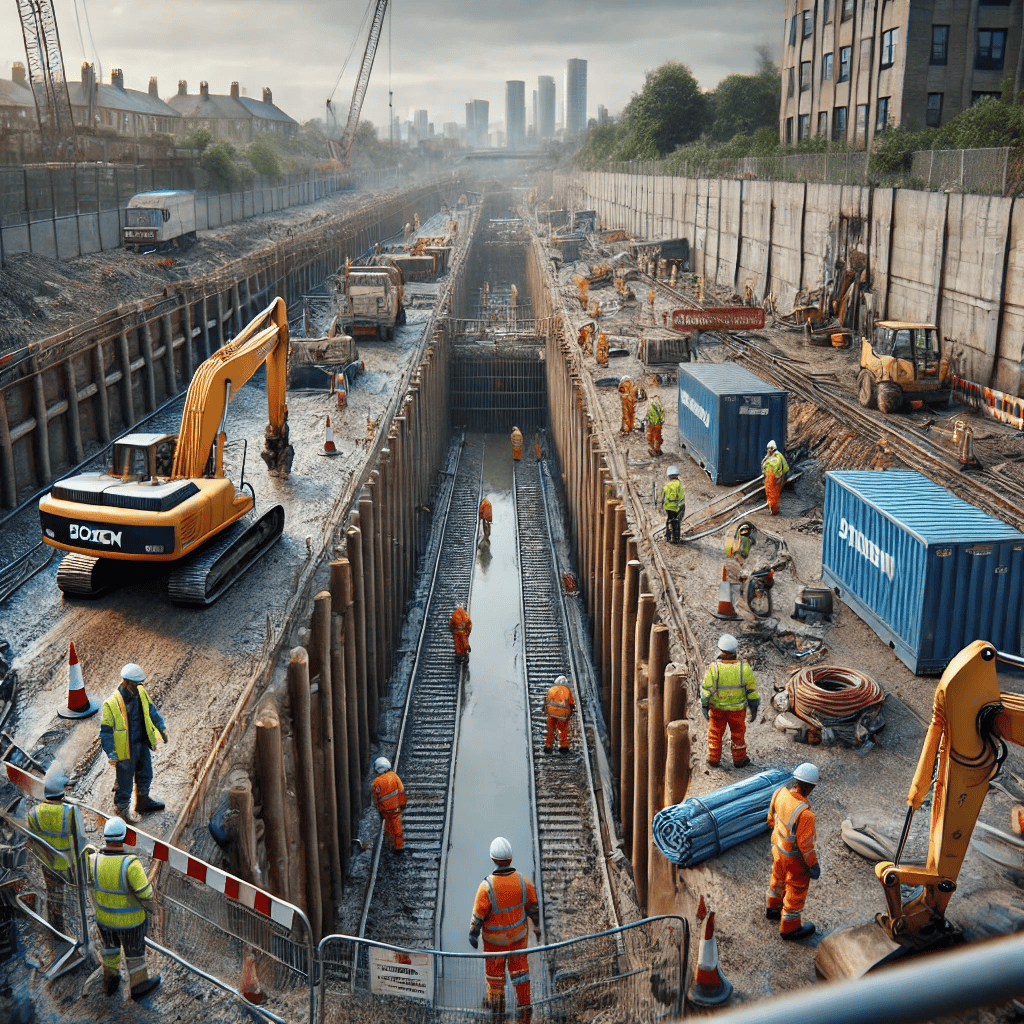Common Excavation Hazards in Construction: A Comprehensive Guide
Excavation work is fundamental to construction projects, yet it presents numerous hazards that can jeopardize the safety of workers and the public. Understanding these risks and implementing effective control measures are crucial for maintaining a safe work environment. This comprehensive guide explores common excavation hazards and offers strategies to mitigate them.
Understanding Excavation Hazards
Excavation involves removing earth to form cavities in the ground, such as trenches, tunnels, or foundations. The primary hazards associated with excavation include:
- Cave-ins and Collapses: Unstable soil can lead to the sudden collapse of excavation walls, posing significant risks to workers.
- Falling Objects: Tools, equipment, or debris can fall into excavated areas, endangering personnel below.
- Hazardous Atmospheres: Excavations may accumulate toxic gases or lack sufficient oxygen, creating dangerous breathing conditions.
- Water Accumulation: Ingress of water can destabilize excavation sites and increase the risk of drowning.
- Underground Utilities: Striking hidden utilities like gas lines or electrical cables can cause explosions or electrocution.
Key Excavation Hazards and Mitigation Strategies
1. Cave-ins and Collapses
Risks:
- Burial or crushing injuries due to collapsing soil.
Mitigation:
- Shoring: Install supports to prevent soil movement.
- Sloping: Angle the excavation walls away from the trench to reduce pressure.
- Benching: Create stepped levels to stabilize walls.
- Soil Assessment: Conduct a thorough analysis to determine stability and appropriate protective systems.
2. Falling Objects
Risks:
- Injuries from tools, materials, or debris falling into the excavation.
Mitigation:
- Protective Barriers: Erect guardrails or fences around the excavation site.
- Tool Lanyards: Secure tools and equipment to prevent accidental drops.
- Material Storage: Keep materials at a safe distance from the edge of the excavation.
3. Hazardous Atmospheres
Risks:
- Exposure to toxic gases or oxygen-deficient environments.
Mitigation:
- Atmospheric Testing: Regularly monitor air quality within the excavation.
- Ventilation: Use mechanical systems to ensure adequate airflow.
- Personal Protective Equipment (PPE): Provide appropriate respiratory protection when necessary.
4. Water Accumulation
Risks:
- Drowning hazards and soil instability due to water ingress.
Mitigation:
- Dewatering: Implement pumps to remove accumulated water.
- Weather Monitoring: Plan work schedules considering weather forecasts to avoid heavy rainfall periods.
- Diversion Channels: Construct channels to redirect surface water away from the excavation site.
5. Underground Utilities
Risks:
- Striking utilities leading to explosions, fires, or electrocution.
Mitigation:
- Utility Surveys: Conduct comprehensive surveys to identify existing underground services.
- Use of Detection Equipment: Employ ground-penetrating radar or cable locators before digging.
- Permit Systems: Implement permit-to-dig procedures to ensure all precautions are in place.
Legal Responsibilities and Best Practices
In the UK, the Health and Safety Executive (HSE) mandates strict adherence to safety protocols during excavation work. Key legal responsibilities include:
- Risk Assessments: Conduct thorough assessments to identify potential hazards and implement control measures.
- Competent Supervision: Ensure that a qualified person supervises excavation activities.
- Training: Provide workers with adequate training on excavation safety practices.
- Inspections: Regularly inspect excavation sites to detect and rectify hazards promptly.
Conclusion
Excavation work, while essential, presents significant hazards that require diligent management. By understanding common risks and implementing effective mitigation strategies, construction professionals can ensure a safer working environment. Adherence to legal responsibilities and continuous safety education are paramount in preventing accidents and safeguarding lives.

